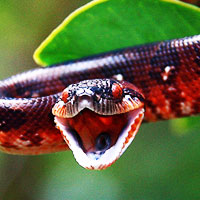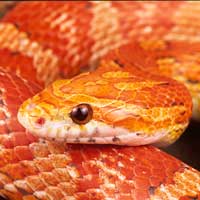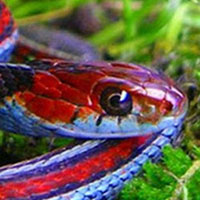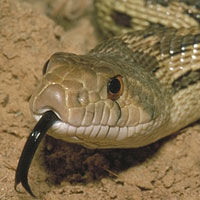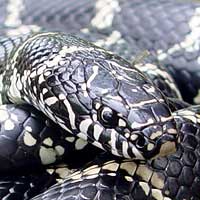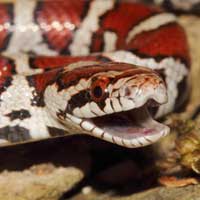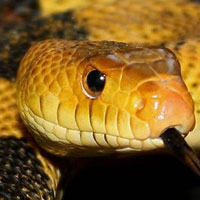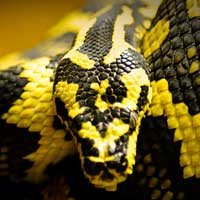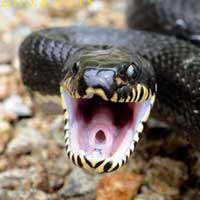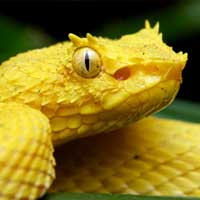Explore the Fascinating World of Macklot's Python
The scientific name of Macklot's Python is Liasis mackloti, and it belongs to the Pythonidae family, which consists of non-venomous constricting snakes commonly referred to as pythons.
Scientific Name: Liasis mackloti
Snake Family: Pythonidae
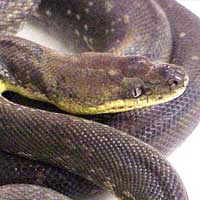
Introduction to Macklot's Python
The Macklot's Python (Liasis mackloti), also known as the Freckled Python, is a non-venomous snake native to Indonesia and surrounding regions. Known for its striking iridescent scales and manageable size, this species is popular among reptile enthusiasts. Macklot's Pythons are both hardy and adaptable, making them an excellent choice for experienced snake keepers. This guide provides a detailed look at their habitat, diet, behavior, health, reproduction, and care requirements.
Understanding the Natural Habitat of Macklot's Python
The Macklot's Python is native to the Lesser Sunda Islands of Indonesia and nearby regions. Its adaptability to diverse environments makes it a resilient species.
- Geographic Range: Found in Indonesia, Timor, and nearby islands.
- Preferred Habitat: Grasslands, forests, and rocky outcrops.
- Climate: Tropical with warm temperatures and moderate to high humidity.
| Region | Habitat Type | Key Features |
|---|---|---|
| Lesser Sunda Islands | Grasslands | Open areas with abundant prey |
| Timor | Forests | Moderate humidity, dense foliage |
| Nearby Islands | Rocky Outcrops | Shelter in crevices |
Diet and Feeding Habits of Macklot's Python
The Macklot's Python is a carnivorous predator with a diet that reflects its opportunistic feeding behavior. In captivity, feeding is straightforward when proper care is taken.
- Natural Diet: Small mammals, birds, and reptiles.
- Feeding Frequency:
- Juveniles: Every 5-7 days to support growth.
- Adults: Every 10-14 days depending on size and activity level.
- Captive Feeding Tips:
- Offer pre-killed, thawed rodents to prevent injury.
- Provide prey that matches the widest part of the snake’s body.
- Feed in a separate enclosure to reduce the risk of substrate ingestion.
Behavior and Temperament of Macklot's Python
Macklot's Pythons are known for their inquisitive and active nature. While they are generally docile, understanding their behavior is key to proper handling.
- Activity Patterns: Primarily nocturnal but may bask during the day.
- Defensive Behavior: Can be defensive when young but typically calms with regular handling.
- Interaction with Humans: Tolerates handling well when acclimated properly.
By observing their behavior and handling them gently, you can establish a positive relationship with your Macklot's Python.
Health and Lifespan of Macklot's Python
With proper care, Macklot's Pythons can live 15-20 years in captivity. Maintaining their health requires attention to environmental conditions and regular monitoring.
- Common Health Issues:
- Respiratory infections from low humidity or improper temperatures.
- Shedding problems due to insufficient humidity.
- Parasitic infestations such as mites or ticks.
- Preventive Measures:
- Maintain humidity levels between 50-70%.
- Provide a temperature gradient with basking spots at 88°F-92°F.
- Ensure regular cleaning of the enclosure and routine veterinary check-ups.
Reproduction and Breeding of Macklot's Python
The Macklot's Python is oviparous, meaning it lays eggs. Successful breeding in captivity requires careful attention to environmental conditions and timing.
- Mating Season: Typically during the cooler months of the year.
- Clutch Size: 10-20 eggs per clutch.
- Incubation Period: 50-60 days at temperatures of 86°F-88°F.
- Breeding Tips:
- Simulate seasonal changes to encourage mating behavior.
- Provide a nesting box with moist substrate for egg-laying.
- Monitor incubation conditions closely for healthy hatchlings.
Handling and Caring for a Macklot's Python
Handling and caring for a Macklot's Python requires patience and consistency. With proper care, this species can thrive in captivity and become a rewarding pet.
- Enclosure Requirements:
- Minimum size: 4’ x 2’ x 2’ for adults.
- Include climbing branches and secure hiding spots.
- Maintain proper ventilation and a secure enclosure.
- Handling Tips:
- Handle gently and support the snake’s entire body.
- Avoid handling during shedding or immediately after feeding.
- Wash hands before and after handling to ensure hygiene.
By meeting their specific needs, Macklot's Pythons can be fascinating and manageable pets for dedicated keepers.
Other Snakes In This Species
 Amethystine Python
Amethystine Python Ball Python
Ball Python Black-Headed Python
Black-Headed Python Boelens Python
Boelens Python Borneo Blood Python
Borneo Blood Python Burmese Python
Burmese Python Burrowing Python
Burrowing Python Centralian Python
Centralian Python Childrens Python
Childrens Python Coastal Carpet Python
Coastal Carpet Python Diamond Python
Diamond Python Green Tree Python
Green Tree Python Indian Python
Indian Python Inland Carpet Python
Inland Carpet Python Jungle Carpet Python
Jungle Carpet Python Macklots Python
Macklots Python Malaysian Blood Python
Malaysian Blood Python Olive Python
Olive Python Pygmy Python
Pygmy Python Reticulated Python
Reticulated Python Ringed Python
Ringed Python Rock Python
Rock Python Rough Scaled Python
Rough Scaled Python Spotted Python
Spotted Python Sumatran Blood Python
Sumatran Blood Python Timor Python
Timor Python White Lipped Python
White Lipped Python
